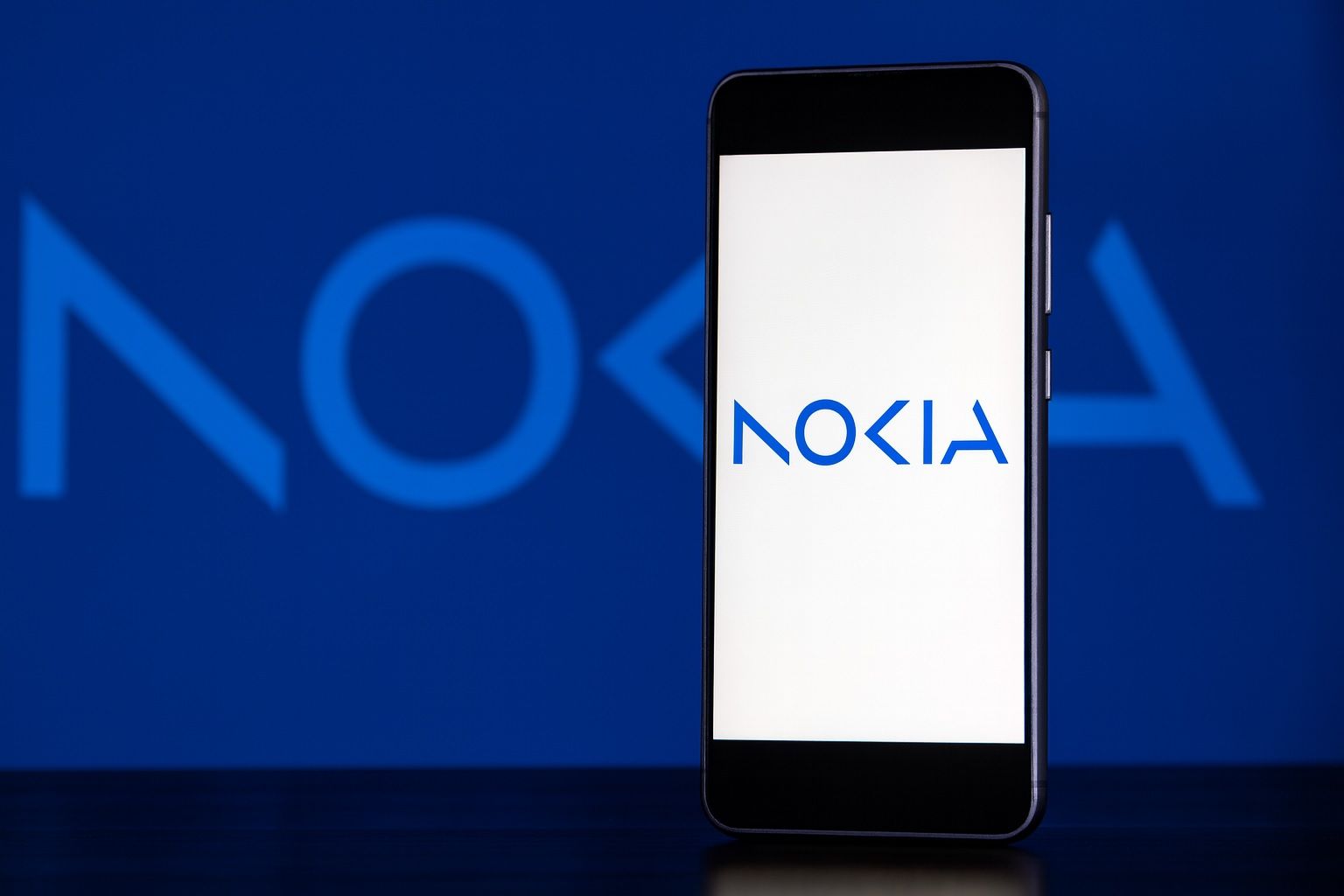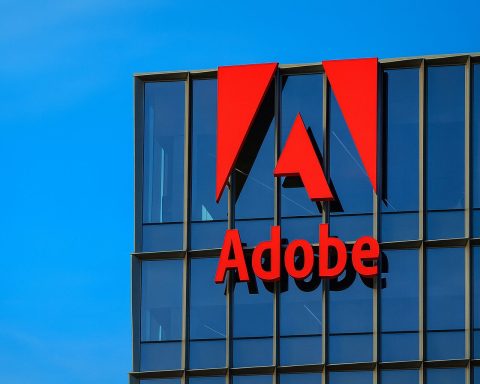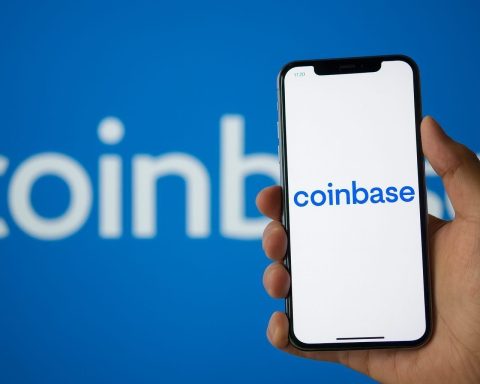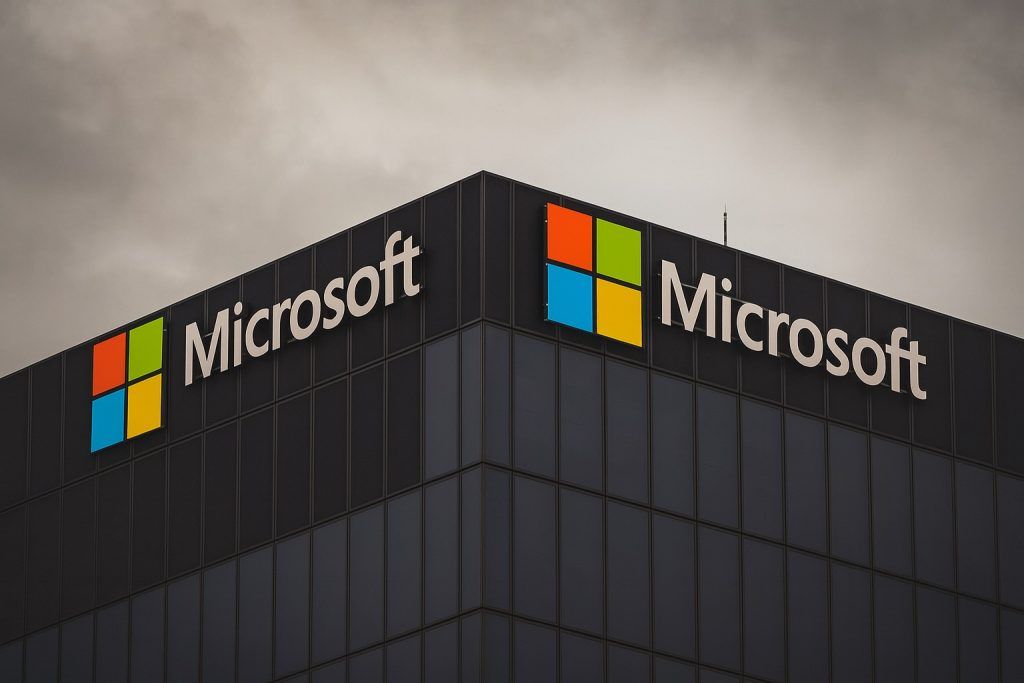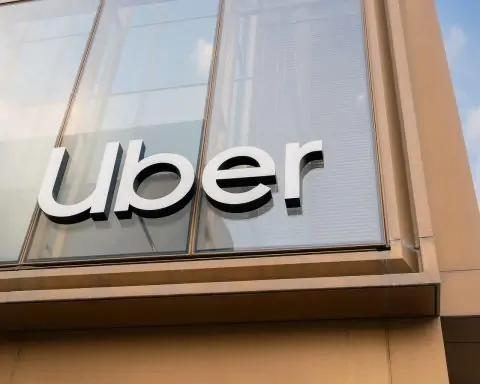- Surging Share Price: Nokia Oyj’s stock (NYSE: NOK) has rocketed to its highest level in nearly a decade after a flurry of positive news. Shares jumped over 20% on Tuesday alone following a $1 billion strategic investment from Nvidia, and have rallied roughly 40% over two days [1]. With this surge, Nokia’s U.S.-listed shares are up nearly 70% year-to-date in 2025 [2], trading above the $6 mark.
- Nvidia’s $1B Stake:Nvidia (NVDA) will purchase 166.4 million new Nokia shares at $6.01 each – a 2.9% stake making it one of Nokia’s largest shareholders [3]. The deal, announced Oct. 28, includes a partnership to develop AI-powered 5G/6G network solutions and integrate Nokia’s data-center networking gear with Nvidia’s AI computing platforms [4]. Nvidia’s CEO Jensen Huang hailed the alliance as helping make the U.S. “the center of the next 6G revolution” [5]. Nokia will use the $1B proceeds to “advance its strategic plans” around “trusted connectivity for the AI supercycle” [6].
- Earnings Beat & 5G Wins: Nokia’s Q3 2025 earnings handily beat expectations, with revenue up ~12% year-on-year to €4.83 billion [7]. Operating profit hit €435 million (vs ~€342M expected) and full-year profit guidance was raised to €1.7–2.2 billion [8]. The company has announced a string of 5G contracts in recent weeks – extending a rollout with Vodafone/Vodacom in Europe and Africa, a £2 billion project (with Ericsson) to upgrade ~7,000 UK mobile sites after the Vodafone–Three merger, a “green” 5G network deal with Rakuten in Japan, and a network expansion with Finland’s Elisa [9]. Nokia also inked a 5-year agreement to modernize utility giant E.ON’s communications network, aiming to cut the grid’s network energy use by ~50% via Nokia’s optical/IP gear [10].
- AI Focus and 6G Ambitions: Under new CEO Justin Hotard (an ex-Intel executive), Nokia is pivoting aggressively toward AI and cloud networking. “I fundamentally think we’re at the front end of an AI supercycle, much like the 1990s with the internet,” Hotard told Reuters [11], emphasizing booming demand from data centers. Nokia says about 6% of its sales now come from AI/cloud customers, and its Optical Networks division grew 19% YoY in Q3 on surging data-center orders [12] [13]. The Nvidia deal further ties Nokia to the AI boom, and the two firms – along with T-Mobile US – plan to trial AI-driven 6G radio technology in 2024 [14].
- Analysts’ Take: Wall Street analysts have grown more bullish on Nokia after the Nvidia tie-up and earnings news. Jefferies upgraded the stock to “Buy” (from Hold) and hiked its price target to €6.60 (from €4.50) [15], citing Nokia’s shift to AI-centric networking. JPMorgan reiterated an Overweight rating, raising its target to $7.10 [16], and Northland Capital now forecasts $7.50 [17]. However, some urge caution – UBS lifted its target to €5.40 but kept a Neutral stance, warning that telecom capital spending could slow [18]. The consensus rating for NOK is a modest “Moderate Buy” with an average target in the mid-$5s [19], reflecting tempered optimism.
- Outlook – Opportunities & Risks: Nokia’s valuation has climbed to roughly 28× forward earnings with the recent rally, and the stock now yields about 3% in dividends [20]. Bulls point to the company’s diversified portfolio (wireless, optical, cloud software, and patents) and strong balance sheet (debt-to-equity ~0.2) [21], not to mention government/defense 5G opportunities amid rising NATO spending [22]. Yet challenges remain: Nokia’s operating margins are still thin (~3.7% last quarter) [23], and it faces fierce competition. Rival Ericsson’s booming Q3 sales (including a big AT&T 5G win) underscore Nokia’s underperformance in North America [24]. China’s market remains largely off-limits to Western 5G vendors, and global carrier spending is lukewarm [25]. Nokia has exited Russia entirely and may consider divesting non-core units to focus on growth areas [26]. Bottom line: Nokia has strong momentum now – but it must prove that its AI and 5G bets can deliver sustained growth and margin improvement to justify the hype [27].
Nokia Soars as Nvidia Invests – AI Hype Ignites a Decade-High Rally
Nokia’s stock price surged to its highest level since 2016 after news of Nvidia’s investment, capping a dramatic late-October rally [28]. The share price nearly doubled from earlier in the month, closing up 20.8% on Tuesday and climbing further on Wednesday [29]. Investors flocked to Nokia after Nvidia – the world’s leading AI chipmaker – agreed to take a $1 billion stake in the company, a move analysts call a “strong endorsement of Nokia’s capabilities” in next-gen networks [30]. Nvidia’s investment will make it Nokia’s second-largest shareholder (at ~2.9% ownership) and came at a premium $6.01 per share [31], underscoring confidence in Nokia’s future.
Nvidia’s backing instantly reframed Nokia as a potential AI infrastructure player rather than just a 5G equipment supplier. “Thank you for helping the United States bring telecommunication technology back to America,” Nvidia CEO Jensen Huang quipped to Nokia’s chief during the announcement, saying the deal will help make the U.S. “the center of the next 6G revolution” [32]. Under the partnership, Nokia and Nvidia will collaborate on AI-driven networking – for example, using Nvidia’s GPU chips to accelerate Nokia’s 5G/6G radio software, and integrating Nokia’s high-performance switching and optical transport systems into Nvidia’s AI data centers [33] [34]. Nokia CEO Justin Hotard expects these joint solutions to begin boosting revenue by 2027 as they roll out commercially – first enhancing 5G networks and later underpinning nascent 6G deployments [35]. In fact, Nokia, Nvidia and T-Mobile US plan to start trialing AI-powered 6G base stations in 2024, highlighting how central this alliance could be for next-generation wireless [36].
The stock market’s reaction has been emphatic. Nokia’s Helsinki-listed shares hit their highest price in nearly 10 years on the Nvidia news, and its New York shares similarly spiked to multi-year highs [37]. After such a two-day 40% surge, some pullback was inevitable – Nokia stock dipped about 5% in Helsinki on Thursday as a few investors took profits – but the overall sentiment remains bullish [38]. “This is a strong endorsement of Nokia’s capabilities,” said Paolo Pescatore, an analyst at PP Foresight, adding that “next-generation networks, such as 6G, will play a significant role in enabling new AI-powered experiences.” [39] In other words, Nvidia’s vote of confidence suggests Nokia will be a key player as AI and telecom converge. There are even rumors (unconfirmed) that Nvidia’s rival AMD has explored a similar investment in Nokia [40] – a sign of how hot the telecom-AI intersection has become. For Nokia, the $1B cash infusion provides resources to accelerate its roadmap (“the AI supercycle”, as management calls it [41]) and positions the firm as a rare bridge between cloud computing and mobile networks in the coming AI era.
Earnings Beat and 5G Deals Underpin Nokia’s Rebound
Just days before the Nvidia bombshell, Nokia had already lit a fire under its stock with unexpectedly strong third-quarter earnings and a windfall of 5G contracts. On Oct. 23, the Finnish telecom equipment maker reported Q3 2025 revenue of €4.83 billion, up ~12% year-on-year [42] – its fastest growth in years – thanks to booming demand in its optical networks and cloud services segments. Comparable operating profit jumped to €435 million, easily topping analyst forecasts of around €340 million [43]. Off the back of that performance, CEO Justin Hotard raised Nokia’s full-year profit outlook, now guiding €1.7–2.2 billion in operating profit (slightly above the previous range) [44]. Investors cheered not only the earnings beat, but what was driving it: Nokia’s strategic shift toward high-speed networking for cloud and AI customers appears to be paying off. The company noted that about 6% of group sales last quarter came from AI and cloud data-center clients – a small but rapidly growing share [45]. Strong orders for optical transport systems and cloud software helped counter softer trends in its legacy mobile radio business [46]. “Clearly the incremental growth is driven by data centres,” Hotard explained, citing “a huge step up in volume” as big tech firms and others build out AI infrastructure [47]. Nokia’s push into this arena has been bolstered by its $2.3 billion acquisition of U.S. optical firm Infinera, completed earlier this year, which instantly gave Nokia a leading position in ultra-fast data center interconnect gear [48] [49].
Equally encouraging for shareholders, Nokia announced major contract wins spanning the globe, reinforcing that it can capture market share despite fierce competition. In October alone, Nokia:
- Expanded its Vodafone partnership – Nokia will supply 5G equipment across Europe and Africa for Vodafone and its subsidiary Vodacom, extending a longstanding relationship [50].
- Won a £2 billion UK deal: Together with rival Ericsson, Nokia was tapped to upgrade ~7,000 mobile sites in the UK as part of network improvements following the planned Vodafone–Three merger, one of the largest 5G projects in Britain [51].
- Secured a “green 5G” contract in Japan: Nokia is deploying energy-efficient 5G radios for Rakuten Mobile, including recycling old network hardware, to support Rakuten’s sustainable network initiative [52].
- Modernized Finland’s Elisa network: Nokia’s home-country operator Elisa expanded its 5G network rollout with Nokia to increase capacity and speed nationwide [53].
- Moved into new verticals: In a notable diversification beyond telecom, Nokia signed a 5-year deal with European energy giant E.ON (announced Oct. 28) to overhaul E.ON’s communications infrastructure across its electric grid operations [54]. Nokia will deploy state-of-the-art IP routers, optical fiber links and automation software to create a “smart grid” network for E.ON, aiming to cut network energy consumption ~50% versus the legacy system [55]. “What sets this project apart is the ability to deliver across all key domains as a single vendor,” said Nokia’s Germany head, noting it “perfectly positions us to enable E.ON to digitize its grids” in the coming years [56].
These deals have significantly bolstered Nokia’s order backlog and market credibility. By mid-October, Nokia’s New York shares had already climbed to their highest level since 2022 on optimism around the contract momentum [57]. The message: Nokia is not only winning business from traditional carriers but also extending into new high-growth areas like cloud providers and even utilities – exactly the sort of diversification that investors want to see. “Nokia announced major telecom deals that boosted investor optimism,” notes Marcin Frąckiewicz, an analyst with TechStock², who attributed an early-October rally (about +14%) largely to these contract wins [58]. In short, 5G remains a core driver – Nokia continues to gain 5G radio and core network contracts worldwide – but the company’s future growth story now leans just as much on fiber optics, cloud and enterprise networks tied to the AI revolution.
AI “Supercycle”: Nokia Transforms to Ride the Next Wave
Nokia’s leadership is betting that we are at the dawn of a years-long AI-driven upgrade cycle for communications networks – a boom as transformative as the internet expansion of the 1990s. “I fundamentally think we’re at the front end of an AI supercycle, much like the 1990s with the internet,” CEO Justin Hotard said in a recent interview [59]. A former head of Intel’s data center & AI division, Hotard was brought in as Nokia’s chief executive in April to accelerate this very transformation. He downplays talk of an AI bubble: “Even if there’s a bubble, a trough, we’ll look to the longer-term trends. And right now, all those trends are very favourable,” Hotard added, pointing to surging demand for cloud computing and intelligent network automation [60]. In September, Nokia even created a dedicated Technology & AI unit led by new CTO Pallavi Mahajan (another Intel alum) to spearhead AI product development [61].
One concrete example of Nokia infusing AI into its offerings: earlier this month it licensed AI-powered RAN (Radio Access Network) software from Hewlett Packard Enterprise and onboarded a team of HPE engineers to integrate it into Nokia’s 5G/6G base station portfolio [62]. This AI-driven RAN controller will help telecom operators automatically optimize network performance – managing cell sites more intelligently based on real-time data and machine learning. Such capabilities are increasingly crucial as networks get more complex with 5G and upcoming 6G. Hotard described these AI networking trends as “very favorable” for the long run, even if there are short-term hype cycles [63].
Crucially, Nokia’s shift toward optical and cloud-based networking is expected to improve its financial profile. Higher-margin businesses like optical transport, IP routing, and software could gradually lift profitability. Analysts at Jefferies note that Nokia is evolving “from a predominantly RAN-centric business struggling for growth, to one where rising AI data center exposure … is expected to drive steady growth.” [64] In Q3, about 29% of Nokia’s optical network sales came from data-center clients (e.g. hyperscale cloud companies) [65]. Nokia even began shipping cutting-edge 800G optical transceivers – ultra-fast fiber-optic modules – to a major U.S. cloud provider during the quarter [66]. This mix shift bodes well for margins. Jefferies projects Nokia’s gross profit margins will climb to ~45–46% by 2026–27 (up from ~42% recently) as the company sells more high-speed optical and routing gear for AI networks [67]. They and others foresee Nokia’s overall revenue growth accelerating to ~5–6% annually in 2026–27, with the Optical Networks division surging ~25% next year on AI demand [68]. In effect, Nokia is pivoting from being a slow-growth mobile hardware vendor to a broader tech infrastructure provider positioned in the sweet spot of the AI boom. The $1B Nvidia partnership only reinforces this narrative – it brings Nokia into Nvidia’s ecosystem and could make its equipment a de facto standard for linking AI supercomputers with 5G/6G networks.
All that said, Nokia’s makeover is still a work in progress, and not everyone is convinced the hype will translate into big profits overnight. After the euphoric run-up in the stock, some analysts caution that Nokia needs to show tangible results. The stock’s rapid ascent pushed its 14-day Relative Strength Index (RSI) above 70 – a technical sign of overbought conditions – suggesting the rally may pause or pull back in the near term [69]. “Nokia is still a ‘show-me’ story,” says TechStock²’s Frąckiewicz, noting that the company must prove its strategic moves “translate into sustained earnings growth and higher margins next year.” [70] If the promised AI “supercycle” doesn’t materialize as robustly as hoped, or if 5G spending by carriers continues to stagnate, Nokia could find its stock rally fizzle out just as quickly as it ignited.
Wall Street Outlook: Cautious Optimism as Nokia Reboots
Financial analysts, for the most part, see brighter days ahead for Nokia, though opinions vary on how much of the turnaround is already priced into the stock. The wave of upgrades post-earnings and post-Nvidia news reflects genuine enthusiasm. For instance, Jefferies’ Janardan Menon upgraded Nokia to Buy from Hold, arguing that as the company’s network infrastructure business (optical, cloud, enterprise) grows steadily, the market will assign Nokia a higher valuation [71]. Jefferies boosted its 12-month price target to €6.60 (about $7) [72], which implies significant upside from current levels. JPMorgan’s Sandeep Deshpande likewise maintained an Overweight rating and raised his target to $7.10 [73], citing Nokia’s expanding exposure to AI-driven demand. Northland Capital went further, reiterating an Outperform and predicting $7.50 for Nokia ADRs [74], noting the company’s 19% optical growth last quarter rivaled that of industry leader Ciena.
Not everyone on the Street is fully on board yet. UBS analysts, for example, increased their price target to €5.40 (from €4.10) after the latest news but kept a Neutral rating [75]. They warn that global telecom capex – the spending by carriers on network gear – could remain under pressure, which might cap Nokia’s near-term growth regardless of the AI buzz [76]. Even some bullish analysts acknowledge that Nokia’s core mobile networks unit (which still makes up the bulk of revenue) has seen flat or declining sales, especially in North America [77]. Deutsche Bank has a more optimistic stance, maintaining a Buy and nudging its target to ~€4.75, but that’s still below current market prices [78]. The consensus among 28 tracked analysts is around a “Moderate Buy”, with the average target in the mid-$5s per share [79]. In other words, after Nokia’s stock surge to ~$6–7, Wall Street on average sees the company as fairly valued unless it can deliver further earnings surprises.
From a valuation perspective, Nokia’s stock isn’t as cheap as it was a month ago. It now trades at roughly 28 times forward earnings [80] – a multiple that anticipates solid growth – compared to rival Ericsson at about 16×. However, Nokia bulls argue the premium is justified if the company’s AI pivot yields results. The firm carries ~€3 billion in net cash on its balance sheet and continues to pay a dividend (around 3% yield) [81] [82], so investors are being paid to wait. Nokia also has a diverse revenue mix (spanning mobile, fixed-line, software, and patent licensing) that can provide stability. Its patent licensing arm, for instance, generates steady high-margin income from 5G intellectual property – something not directly affected by quarterly network equipment cycles. These factors give Nokia a cushion as it invests in new areas.
Still, the road ahead has pitfalls. Profit margins need to improve for the stock rally to be sustained. Despite the Q3 sales boost, Nokia’s operating margin was only 3.8% in the quarter [83], dragged down by pricing pressure in mobile equipment and restructuring costs. This is well below management’s longer-term target margin (they’ve indicated a desire for double-digit margins eventually). By contrast, Ericsson’s operating margin last quarter was over 8%, aided by strength in its U.S. business [84]. Nokia’s weakness in North America – partly due to losing out to Ericsson on some 5G contracts at AT&T and Verizon – remains a concern [85]. The company says it is selectively walking away from low-margin deals (prioritizing profit over volume), but that could cede ground to competitors. Meanwhile, geopolitical factors limit growth: in China, local vendors (Huawei, ZTE) dominate 5G rollouts, leaving Nokia and Ericsson with only small niche roles. Nokia’s complete exit from the Russian market (due to sanctions) has also trimmed its sales by a few percent [86]. And if global carriers keep tightening capital expenditure budgets – a trend seen in 2023 – the tide lifting all network vendors could ebb.
Bottom Line: Nokia has given investors plenty of reasons to be excited – a landmark partnership with the hottest name in tech (Nvidia), improving financials, and a vision to be at the forefront of the next big wave in networking. The stock’s dramatic rise reflects a belief that Nokia is finally turning the corner after years of underachievement. As one Wall Street research note put it, Nokia is “transitioning toward higher-growth AI/optical markets,” but the current share price “is only justified if the growth story plays out.” [87] For the rally to continue, Nokia will need to execute on its promises: successfully integrate AI into its products, grow its cloud and enterprise segments, and boost profitability in the coming quarters. The next checkpoints for investors will be management’s commentary on the Oct. 28 conference call (to discuss the Nvidia deal and earnings) and Nokia’s Capital Markets Day on Nov. 19, when CEO Hotard will outline his longer-term strategy [88]. For now, Nokia’s resurgence is one of the tech sector’s brighter stories, offering a compelling mix of 5G, AI, and turnaround potential – with both remarkable opportunities and significant challenges on the horizon.
Sources: Nokia/GlobeNewswire press release; Nokia Q3 2025 Interim Report; Reuters [89] [90]; ts2.tech (TechStock²) [91] [92]; Yahoo Finance/Investing.com [93]; Company and analyst reports.
References
1. www.reuters.com, 2. www.investopedia.com, 3. www.reuters.com, 4. www.reuters.com, 5. www.reuters.com, 6. www.investopedia.com, 7. ts2.tech, 8. ts2.tech, 9. ts2.tech, 10. ts2.tech, 11. www.reuters.com, 12. ts2.tech, 13. www.reuters.com, 14. www.reuters.com, 15. ts2.tech, 16. ts2.tech, 17. ts2.tech, 18. ts2.tech, 19. ts2.tech, 20. ts2.tech, 21. ts2.tech, 22. ts2.tech, 23. ts2.tech, 24. ts2.tech, 25. ts2.tech, 26. ts2.tech, 27. ts2.tech, 28. www.reuters.com, 29. www.reuters.com, 30. www.reuters.com, 31. www.reuters.com, 32. www.reuters.com, 33. ts2.tech, 34. ts2.tech, 35. www.reuters.com, 36. www.reuters.com, 37. www.reuters.com, 38. www.reuters.com, 39. www.reuters.com, 40. ts2.tech, 41. www.investopedia.com, 42. ts2.tech, 43. ts2.tech, 44. ts2.tech, 45. www.reuters.com, 46. www.reuters.com, 47. www.reuters.com, 48. ts2.tech, 49. www.reuters.com, 50. ts2.tech, 51. ts2.tech, 52. ts2.tech, 53. ts2.tech, 54. ts2.tech, 55. ts2.tech, 56. ts2.tech, 57. ts2.tech, 58. ts2.tech, 59. www.reuters.com, 60. www.reuters.com, 61. www.reuters.com, 62. ts2.tech, 63. ts2.tech, 64. ts2.tech, 65. ts2.tech, 66. ts2.tech, 67. ts2.tech, 68. ts2.tech, 69. ts2.tech, 70. ts2.tech, 71. ts2.tech, 72. ts2.tech, 73. ts2.tech, 74. ts2.tech, 75. ts2.tech, 76. ts2.tech, 77. ts2.tech, 78. ts2.tech, 79. ts2.tech, 80. ts2.tech, 81. ts2.tech, 82. ts2.tech, 83. ts2.tech, 84. ts2.tech, 85. ts2.tech, 86. ts2.tech, 87. ts2.tech, 88. ts2.tech, 89. www.reuters.com, 90. www.reuters.com, 91. ts2.tech, 92. ts2.tech, 93. www.reuters.com
